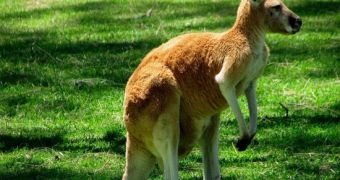A team of University of Adelaide researchers have figured out a way to extract DNA from kangaroo poop. They say that this will make it easier for conservationists to monitor these animals and determine how climate change and global warming are affecting them.
The specialists who developed this innovative DNA test maintain that their method of identifying kangaroo species by analyzing their droppings is both simple and cost effective.
In other words, it can successfully be used by greenheads keeping a close eye on these animals without their needing to have access to state-of-the-art laboratory equipment and whatnot.
Newswise reports that the University of Adelaide researchers have developed their test after taking the time to collect and analyze hundreds of droppings scattered across Australia's north-eastern regions.
After developing the test, the researchers carried out a trial run and found that, as data collected in this manner showed, several kangaroo species in Australia often venture outside the areas they are known to inhabit.
“Collecting droppings, or scats, provides a relatively simple and easy way to estimate the presence or absence of a species. But in this area of Queensland, where there were eight possible kangaroos and wallaby species with overlapping ranges, it’s difficult to correctly identify which species is leaving which scat.”
“The more information on the distribution of species, the better management decisions can be made, particularly in gauging potential land-use and climate change impacts on biodiversity,” specialist Jessica Wadley commented on the importance of using this test to pin down the whereabouts of these animals.
Other DNA tests currently used by researchers rely on a fairly costly process known as gene sequencing, the same source informs us.
However, this test owes its appeal to the fact that it was developed based on unique patterns of DNA fragmentation that were established for each species the scientists were interested in monitoring.
A detailed account of how this test was developed and how it works is made available to the public in a recent issue of the journal Wildlife Research.

 14 DAY TRIAL //
14 DAY TRIAL //